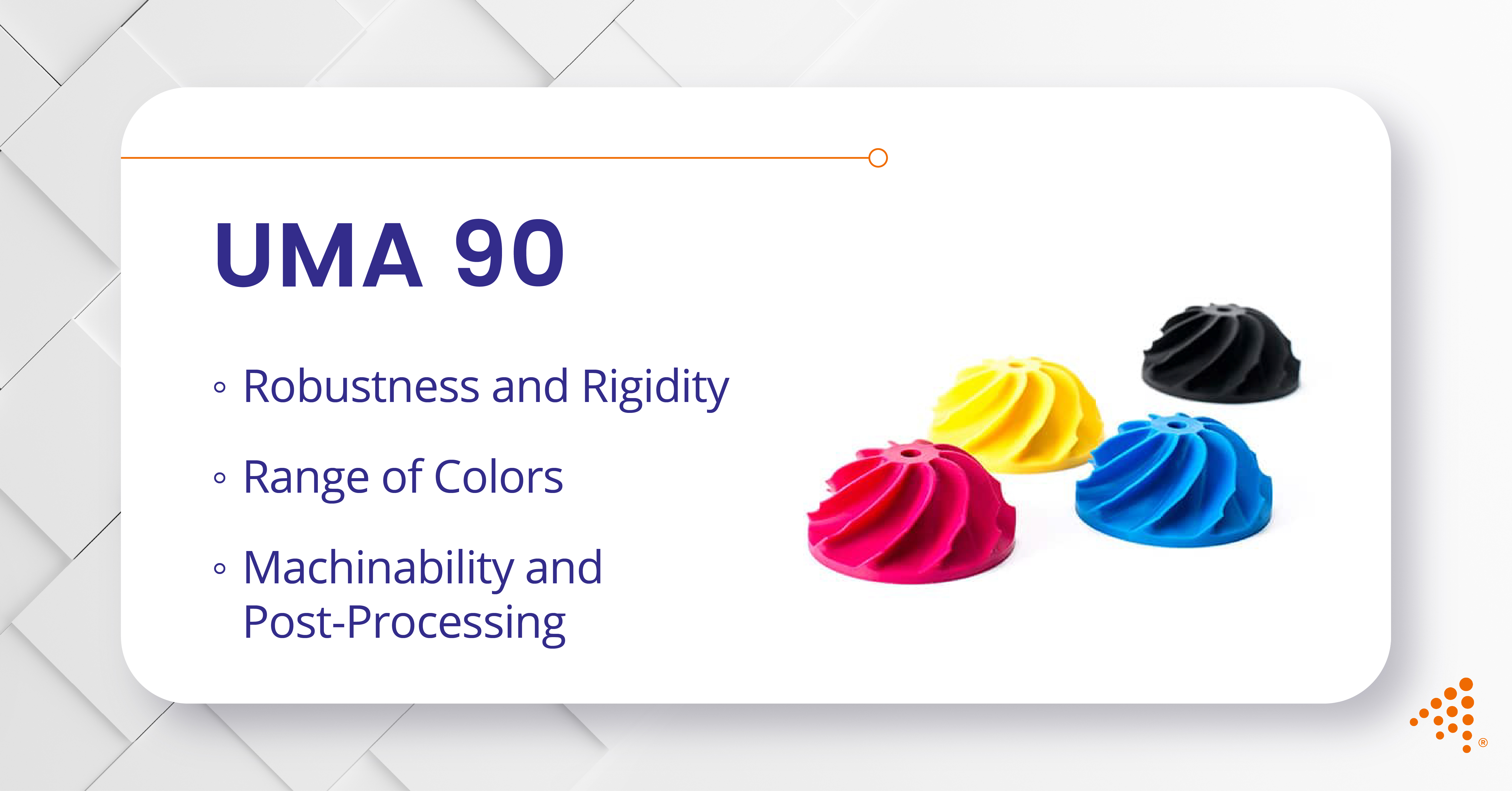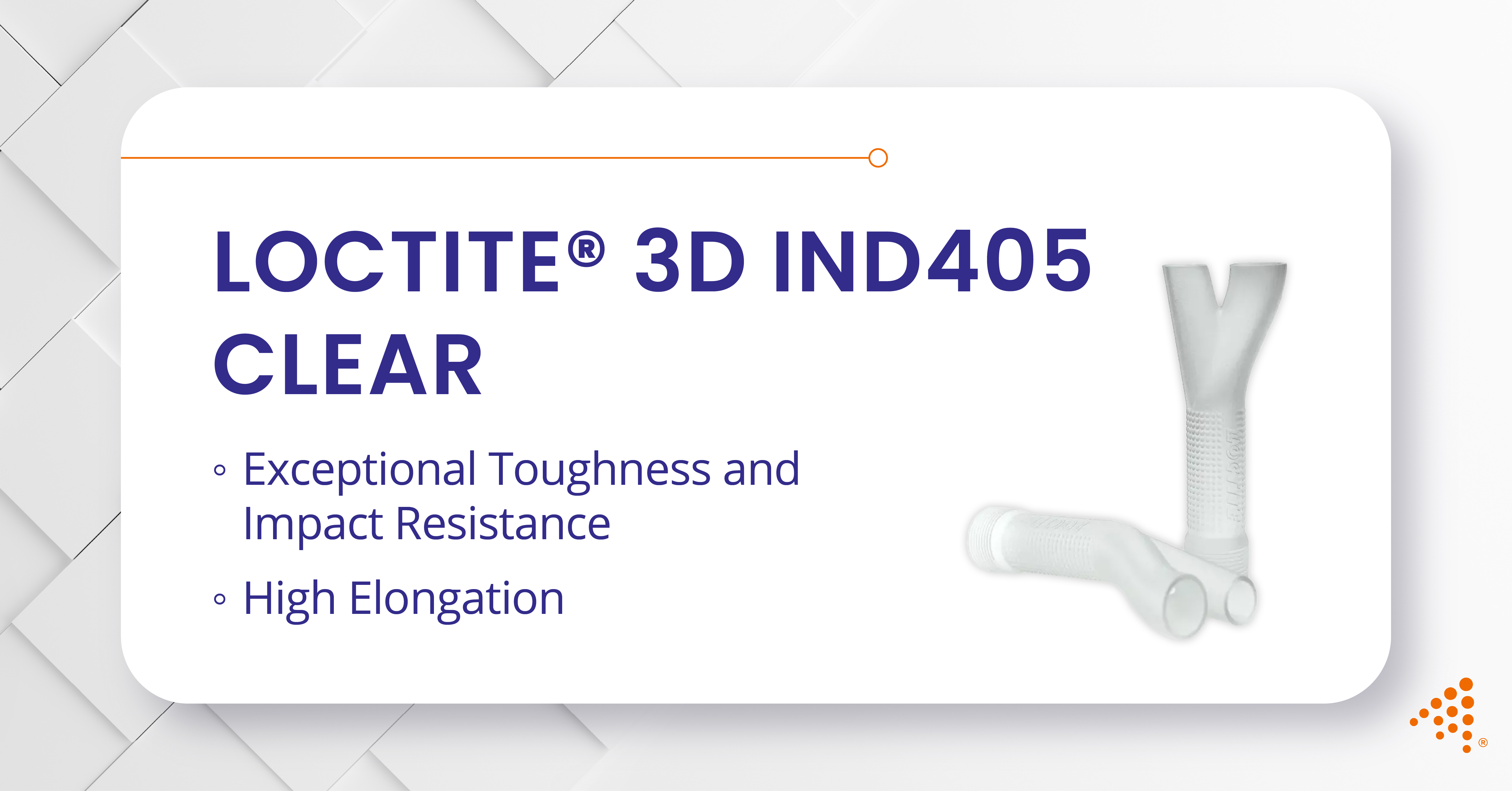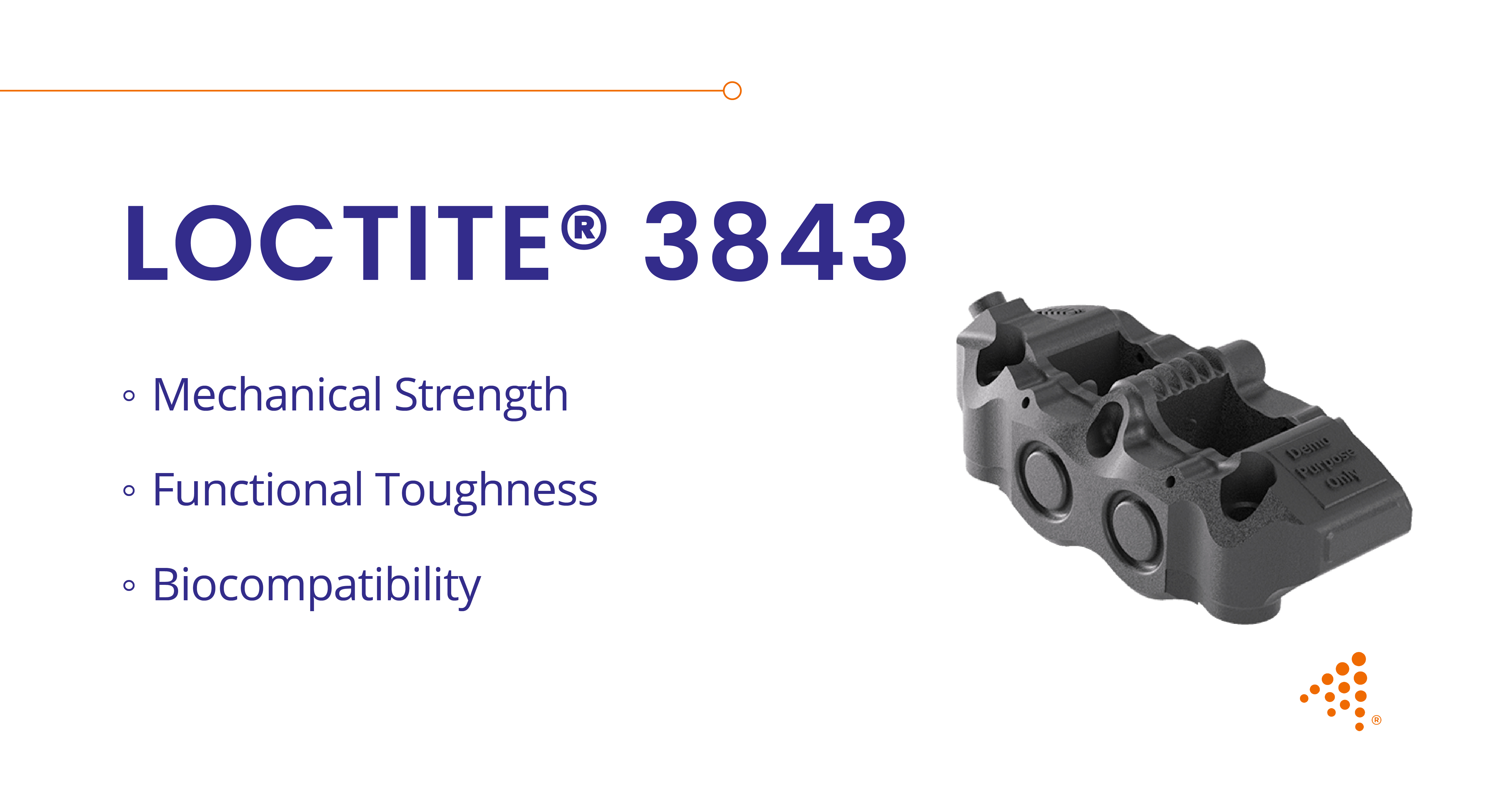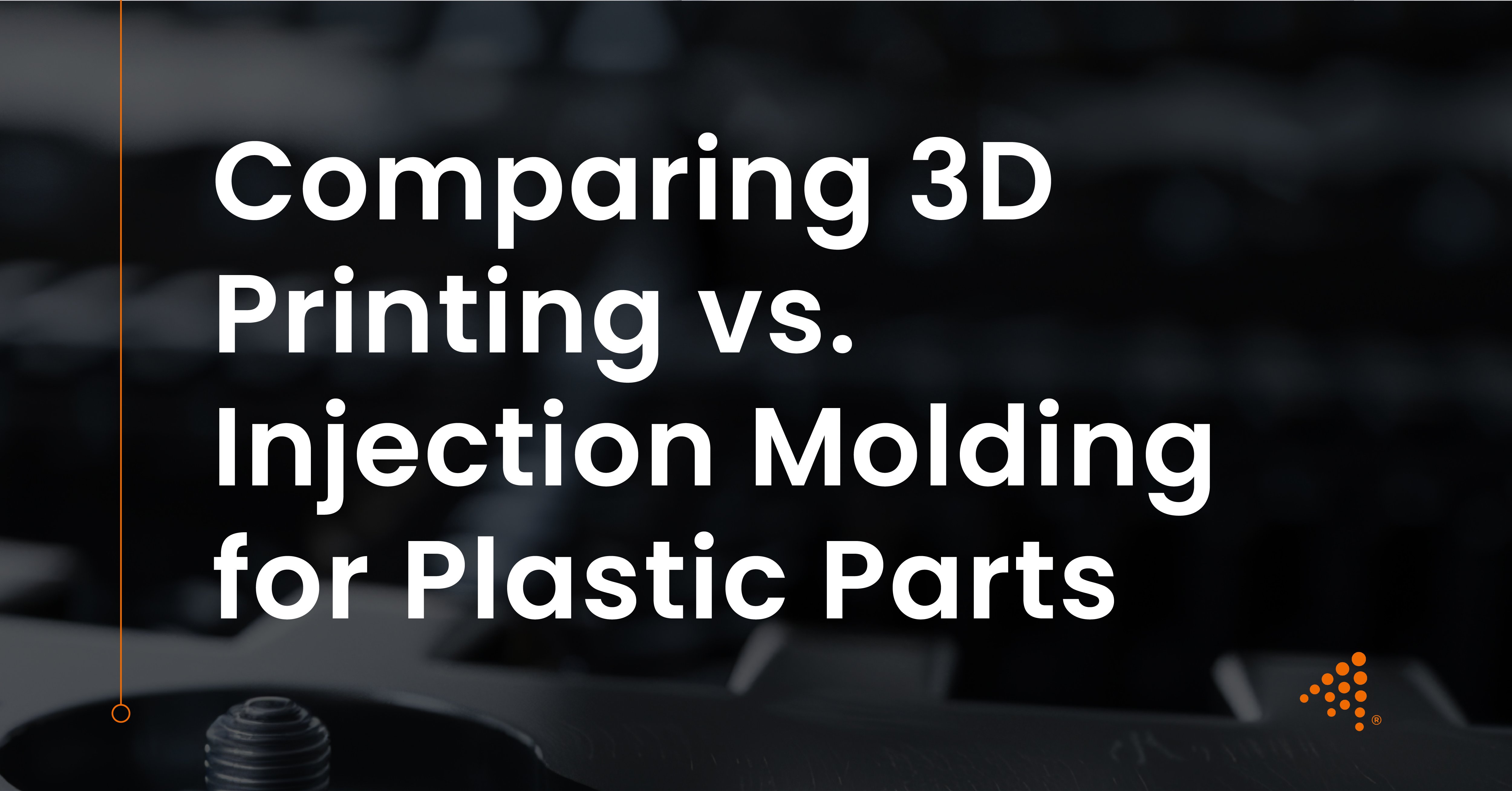LOCTITE® IND405 Clear: Durable Clear 3D Resin
LOCTITE® 3D IND405 Clear is a high-performance, semi-rigid photopolymer resin known for its exceptional toughness, high impact resistance, and...

Urethane Methacrylate 90 (UMA 90) is a rigid and durable photopolymer resin from Carbon, engineered for producing tough manufacturing aids, functional prototypes, and select end-use components. Offering a balance of strength, stiffness, and a quality surface finish, UMA 90 leverages Carbon's Digital Light Synthesis™ (DLS™) technology to create parts suitable for a variety of industries, including those with demanding requirements like medical device development and consumer electronics.
UMA 90 is known for a compelling set of properties that make it a reliable choice for parts that need to withstand mechanical stress and look good doing it. Its characteristics are derived from its urethane methacrylate chemistry, processed via Carbon's innovative DLS technology.
UMA 90 presents a solid mechanical profile, with a tensile strength of 30 MPa and a Young's Modulus of 1400 MPa. This combination results in parts that are stiff and can resist deformation under load, making them suitable for items that require structural integrity.
While being rigid, UMA 90 also offers a degree of toughness, with a notched Izod impact strength of around 30 J/m and an elongation at break of about 30%. This allows parts to absorb some impact energy before fracturing, contributing to their overall durability in handling and use.
Parts produced with UMA 90 using the Carbon DLS process exhibit a smooth surface finish directly from the printer. This reduces the need for extensive post-processing for many components and is particularly beneficial for parts where aesthetics or tight mating tolerances are important. This quality surface finish is also advantageous in some medical injection molding prototype scenarios where appearance can be a factor.
A significant characteristic, especially for the medical sector, is that parts printed with UMA 90 on Carbon M-series printers and processed according to specified instructions have passed ISO 10993-5 (Cytotoxicity) and ISO 10993-10 (Sensitization and Irritation) biocompatibility standards. This opens doors for its use in certain medical device prototypes, fixtures, or non-implantable components that have skin or indirect patient contact.
UMA 90 is available in a spectrum of colors, including cyan, magenta, yellow, black, white, and gray. This versatility allows for color-coding of parts, such as jigs and fixtures for different operational steps, or for producing prototypes and end-use parts that meet specific aesthetic requirements without needing to be painted.
The material possesses a heat deflection temperature (HDT) of approximately 45°C (113°F). While not suited for high-temperature environments, this is adequate for many room-temperature operational settings.
UMA 90 parts can be machined, tapped, or have inserts installed, offering flexibility for assemblies or for achieving final critical dimensions. They can also be painted if custom colors beyond the standard offerings are needed or if enhanced UV protection is required for prolonged outdoor exposure.
Get in touch with our experts to explore custom resin solutions tailored to your project.
The combination of toughness, rigidity, smooth finish, and biocompatibility makes UMA 90 a versatile material for various stages of product development and for some production parts, particularly where precision and durability are key.
One of the primary uses for UMA 90 is in the creation of custom jigs, fixtures, and other manufacturing aids. Its strength and durability ensure these tools can withstand repeated use in assembly or quality control processes. The availability of colors can also help in organizing and identifying tools on a busy production floor.
UMA 90 excels in producing high-fidelity functional prototypes. Engineers and designers can create parts that closely mimic the mechanical properties of final products, allowing for thorough testing of form, fit, and function. This is invaluable in iterating designs rapidly before committing to expensive tooling for injection molding.
The material's rigidity and smooth surface finish make it a good candidate for housings and enclosures for electronic devices or small mechanical assemblies. It protects internal components and offers an aesthetic appeal suitable for many consumer and industrial products.
Given its biocompatibility credentials (ISO 10993-5 and -10), UMA 90 is utilized for non-implantable medical device components, surgical planning models, and prototypes of devices that will eventually be manufactured via medical injection molding. Its accuracy helps ensure that these parts meet the stringent requirements of the healthcare industry.
For certain consumer goods that require a balance of toughness, a good look and feel, and perhaps specific color requirements, UMA 90 can serve as a material for end-use parts. This could include custom knobs, handles, or decorative elements.
Read More About Injection Molding Defects: Discoloration – Why It Happens and How to Avoid It
When evaluating UMA 90 for projects typically suited for traditional injection molding thermoplastics, its performance characteristics align it with materials like Acrylonitrile Butadiene Styrene (ABS) and Polyoxymethylene (POM), also known as acetal. UMA 90, as a rigid photopolymer, shares certain functional similarities with ABS, such as its good stiffness and its utility in creating durable housings, fixtures, and functional prototypes. Both materials can produce parts with adequate strength for many general-purpose uses. However, notable differences exist; for instance, many grades of ABS offer higher impact strength or toughness, meaning they can often endure more significant impacts before failure. Additionally, ABS typically possesses a higher heat deflection temperature than UMA 90, making it more suitable for environments with moderately elevated temperatures. Conversely, UMA 90, when produced using Carbon DLS technology, frequently yields parts with a smoother as-printed surface finish and can achieve finer feature details than those commonly produced with ABS via Fused Deposition Modeling (FDM).
Comparing UMA 90 with POM (acetal), both materials are recognized for their high stiffness, good tensile strength, and excellent dimensional stability, making them candidates for precise functional parts. POM is particularly distinguished by its exceptional wear resistance, low coefficient of friction, and broad chemical resistance, especially against solvents—attributes that make it a preferred choice for components like gears, bearings, and low-friction moving parts. While UMA 90 offers good mechanical properties and can be machined for tight tolerances, it does not possess the inherent lubricity or the extensive wear resistance of POM. The heat deflection temperature of POM is also generally higher than that of UMA 90. However, UMA 90 provides the distinct advantages of additive manufacturing, such as the capability to produce highly complex geometries or consolidated part designs that would be challenging or more costly to achieve through traditional injection molding processes with POM. The choice between UMA 90 and these thermoplastics will therefore depend on the specific balance of mechanical load, thermal exposure, chemical environment, surface requirements, and manufacturing complexity involved in the project.
Mix colors easily and produce rigid parts with precision and speed.
While UMA 90 is a capable material, it's important to understand its limitations to ensure it's the right choice for a given project.
With an HDT around 45°C (113°F), UMA 90 is not suitable for components that will be exposed to significantly elevated temperatures. This restricts its use in environments where parts might experience heat soak, such as automotive under-hood components or devices undergoing certain heat sterilization methods.
Although UMA 90 is described as tough and durable for a 3D printing resin, its notched Izod impact strength (around 30 J/m) is lower than that of many robust engineering thermoplastics like polycarbonate or high-impact ABS. For parts subjected to severe or repeated shocks, a tougher material might be necessary.
Standard UMA 90 is not inherently UV stabilized. Prolonged exposure to direct sunlight or strong UV sources can lead to degradation over time, potentially causing the material to become more brittle and to experience color shifting. For long-term outdoor use, secondary processing like painting or a UV-resistant coating is recommended.
UMA 90 offers resistance to some common chemicals, but its datasheet advises against prolonged exposure (more than 1 hour) to organic solvents, and certain solvents should be avoided altogether. For parts that will come into contact with aggressive chemicals, thorough testing or selection of a more chemically resistant material would be prudent.
Read More About The Ultimate Guide to ABS for High-Performance Manufacturing
UMA 90 stands out as a compelling material choice within the additive manufacturing landscape for several key reasons, particularly for companies familiar with traditional manufacturing methods like plastic injection molding.
UMA 90 provides a well-rounded profile of rigidity, toughness, and a high-quality surface finish. This combination is valuable for creating parts that are not only mechanically sound but also visually appealing, reducing the need for extensive post-finishing work. The ISO 10993-5 and -10 biocompatibility ratings are a significant advantage for developing medical device prototypes, non-critical components, and patient-specific anatomical models or guides. This allows for early-stage testing with a material that has a known safety profile for specific contact types. From robust manufacturing aids like jigs and fixtures that can withstand the rigors of a production environment to detailed functional prototypes that accurately simulate final part behavior, UMA 90 serves a broad spectrum of needs. Its utility extends to select end-use parts, particularly when leveraging the color options available.
For companies exploring the integration of additive manufacturing into their workflows, especially those in the medical device or high-precision product sectors, UMA 90 offers a reliable, versatile, and high-quality resin option that bridges the gap between rapid prototyping and functional part production.

LOCTITE® 3D IND405 Clear is a high-performance, semi-rigid photopolymer resin known for its exceptional toughness, high impact resistance, and...

LOCTITE® 3843 Matte Blackis a high-performance, one-part photopolymer resin known for its impressive toughness and impact resistance. Validated for...

3D printing and injection molding are two of the most common manufacturing processes used to produce plastic parts. While each method has distinct...